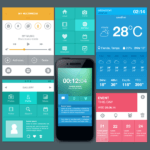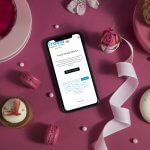Flat Design: Past and Future
- Posted on
- By Nitin Verma
- In Design,
Table of contents

Flat design has come a long way in the past few years. From possibility in 2012 to a world wide trend in 2014. Will it become the new standard in web design in 2015?
Possibility
In August 2012, Microsoft launched Windows 8 based on Metro style accompanied by some flat design elements, having a very colorful interface which has impressed and inspired numerous designers. Thus flat colorful designs have become a possibility that was seriously taken into consideration by web designers.
However, flat design was strongly criticized mainly because of the lack of drop shadows and styling tools to add depth. Without these elements flat design critics complained about the difficulty in noticing if a button is clickable or not.
Even with the lack of the three-dimension visual illusion, flat design has proven to be better in many other ways. The minimalist design elements, typography and flat colors made the interface more streamlined and efficient. It is much easier to carry out information if the interface is not packed with rich design elements that often distract the user from the main idea.
Better for both end users and developers. Flat design makes it easier to craft an interface that looks good across different browsers and devices, so there's actually no reason as to why you shouldn't use responsive design. Moreover the lack of rich design elements makes websites load faster and look sharp even on high-definition screens.
Trend
In other words flat design cuts off all unnecessary rich design elements making things more efficient in a lot of ways. Flat design has proven its high degree of adjustability in September 2013 when Apple launched iOS 7. This is probably the moment when flat design changed from a possibility to becoming a new trend in the digital world.
Despite all criticisms, in 2014 flat design started shaping the face of the Internet. Numerous websites were slowly adopting this trend and end users were encouraging it. During this hectic year flat design has grown in popularity, and reached a new level, closer to maturity. With few elements reaching maturity, the rich design elements feel too much now and we can be almost 100% certain that they will never come back, at least not in the same style.
Standard?
It's difficult if not impossible to see the future, but some things are predictable. Flat design has earned its place in the digital world and the benefits which come along with it will make this trend slowly go to a standard in 2015. Of course, flat design has its flows, mainly the "what's clickable?" issue, that's why evolution never stops and eventually a new style will emerge leaving flat design behind, just like flat design did with the rich design.
Flat design critic or fan, feel free to share your ideas and thoughts with us in the comments bellow.
Nitin Verma
Nitin Vermaa former writer for Froala, showcased exceptional talent and dedication during their tenure with the company.
-
Hide Show






No comment yet, add your voice below!